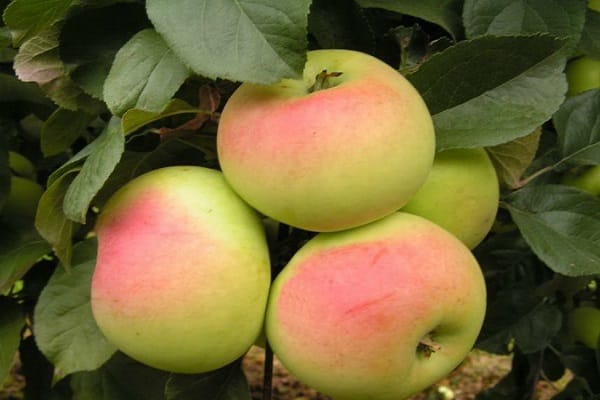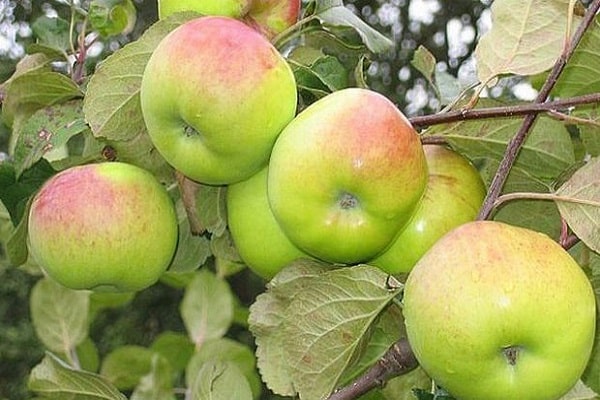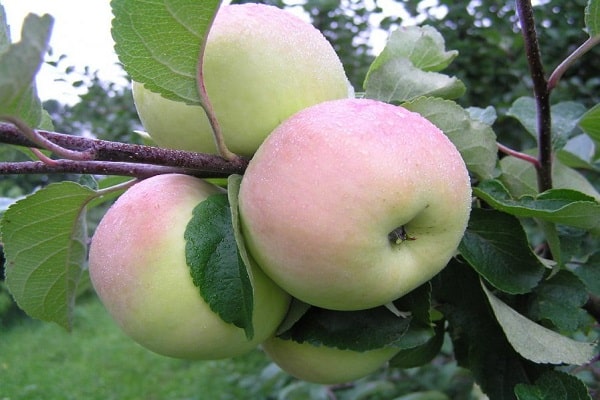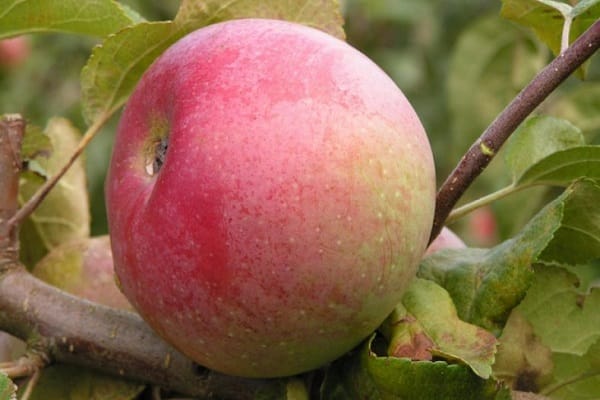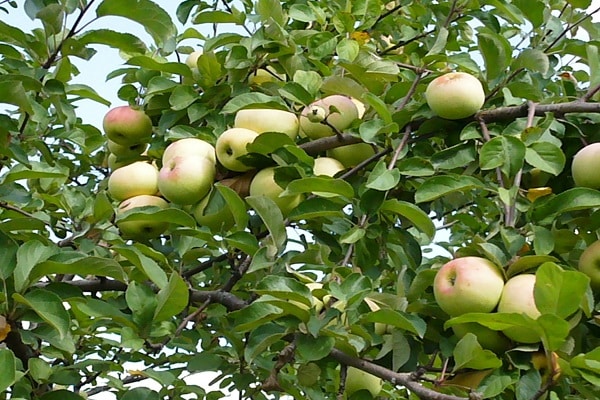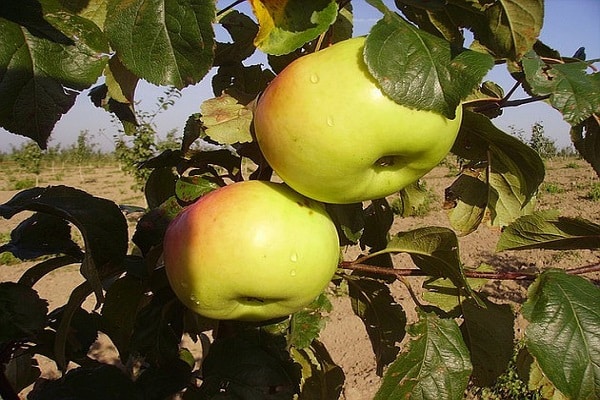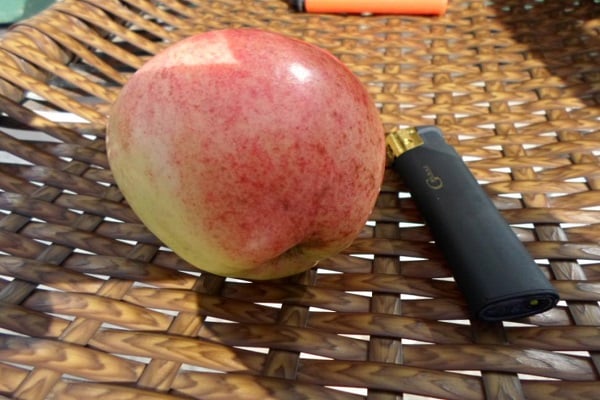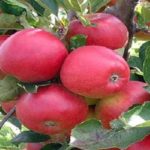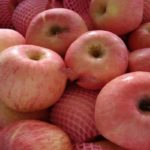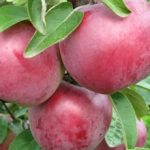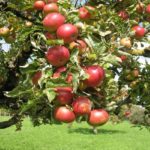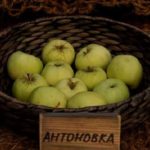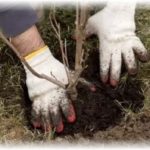The apple variety Imrus is distinguished by winter hardiness, regular fruiting and excellent taste of the fruit. To get the maximum yield, you need to know about the nuances of planting and caring for the Imrus apple tree. Such care and agricultural technology will allow you to get a long-term healthy plant.
- History of the development of the Imrus variety
- External data
- Tree growth
- Crown size
- Annual growth
- Flowers and leaves
- Tasting qualities of apples
- Characteristics of the variety
- Productivity
- Winter hardiness
- Immunity to scab and fire blight
- In what areas can it be grown?
- Fruiting variety
- Pollinability
- Bloom
- Beginning of fruiting
- Apple ripening
- Periods of storage and use of fruits
- Subspecies and options
- Columnar
- Dwarf
- Semi-dwarf
- How to grow a tree?
- Planting dates and technology
- Preparation of seedlings
- Hole size and depth
- What soil is suitable?
- Agricultural technology
- Watering
- Crown trimming
- Prevention from diseases and insects
- Mulching
History of the development of the Imrus variety
This varietal species was bred in 1977 by crossing Antonovka vulgaris and its hybrid varietal subspecies. In 2000, the resulting plant, after passing state tests, began to be recommended for planting in various Russian regions.
External data
Before planting an apple tree, you need to pay attention to its description. This is due to the fact that the feasibility of planting a crop will depend on the dimensional characteristics of the site and climate.
Tree growth
This tree has average growth rates. Basically its height reaches 3 meters.
Crown size
The crown has a spreading structure. In most cases it has a round shape. The density of the crown is average, while its dimensions are quite compact, since when branching from the trunk, the skeletal branches form an acute angle.
Annual growth
The annual growth of the apple tree is 0.1 meters per year due to the vertical arrangement of the branches. Because of this, the tree requires formative pruning, bending the branches in a horizontal direction. Such tree care is mandatory, since in its absence and active growth, the apple tree begins to bear less fruit.
Flowers and leaves
The leaf blades are characterized by an egg-shaped shape, elongated in length. The tip of the leaf is pointed, twisted towards the top. The leaf surface has a wrinkled structure and gloss. The edges of the leaves are ribbed and jagged.
Imrus blooms with small, flattened, whitish-pinkish flowers.The flowers are collected in groups of 5-6, forming corymbose inflorescences.
Tasting qualities of apples
The fruits are characterized by a flattened shape. Their size is medium, the skin has an oily sheen and a fine structure. The color of the fruit is green or light yellow. The pulp is cream-colored and its structure is fine-grained.
Apples have an attractive sweet aroma and juicy sweet and sour pulp. The fruits contain a huge amount of ascorbic acid, sugar, and pectin.
Characteristics of the variety
The Imrus variety is quite popular among Russian gardeners, as it has many advantages:
- increased immunity to the following pathologies: powdery mildew, scab;
- increased yield level: on average 30 kilograms per apple tree;
- regular formation of fruits;
- long shelf life of the harvested crop.
Among the disadvantages of the resulting product are the thin skin of apples.
Productivity
The quality and quantity of the harvest directly depends on the climatic regional characteristics and the provision of proper care. According to statistics, this variety is considered productive: at the age of 4-6 years, the tree is capable of producing an average of 20 kilograms of apples.
Winter hardiness
Another varietal feature is frost resistance. Such trees are distinguished by their unpretentiousness and resistance to temperature changes. They adapt well to early drops in temperature.
Immunity to scab and fire blight
Imrus is characterized by the presence of increased immunity to scab. But it is worth considering that if proper care and planting rules are not followed, the tree may suffer from bacterial burn. This disease develops in conditions of high humidity.To protect the tree, it is necessary to remove the damaged area of the bark and treat the indicated area with a disinfectant.
In what areas can it be grown?
Imrus can be grown in various regions of the country. The best option is to grow such a plant in the Moscow region. If proper care is provided here, the tree begins to bear fruit early.
Imrus grows and develops well even on poor soils of the Leningrad region. Such indicators are achieved due to the unpretentiousness of the plant and its resistance to cold. Since the variety is genetically resistant to scab, it is ideal for cultivation in Belarus.
Fruiting variety
To achieve good fruiting, you need to know the nuances of pollination, flowering and fruit set of this variety. If all the rules are followed, the tree will delight the gardener with a bountiful harvest.
Pollinability
Imrus is an almost self-fertile variety, which, when self-pollinated, is capable of setting only 15% of the fruits. To ensure pollination of the crop, other apple trees should be planted on the site. However, specific pollinating varieties are not identified.
Bloom
The variety is characterized by mid-early flowering. This process usually begins in early or mid-May.
Beginning of fruiting
The fruiting period for this variety begins in the 3rd-4th year of development. In the first year of its growth, the tree produces a small harvest - no more than 10 apples. Every year the yield increases. The fruits begin to form in early September.
Apple ripening
The period of fruit ripening may shift depending on climatic conditions and the provision of the necessary care. Most often, apples begin to ripen en masse in September. The process continues until the first days of October.
Periods of storage and use of fruits
Imrus apples are stored for a very long time, which makes it possible to transport them over long distances. The consumer period is set until March. At the same time, the crop must be stored in dark places. Apples are best preserved when kept cool.
Subspecies and options
Imrus has several subspecies. Among them there are columnar, dwarf and semi-dwarf apple trees.
Columnar
Such trees are distinguished by the fact that they grow upward, without side branches. Tree height: approximately 3 meters. During the fruiting period, the trunk is weighed down with a large amount of fruit. This plant is easy to care for and has an interesting appearance.
Dwarf
Such plants are distinguished by early fruiting and low structure. At the same time, the trees are unpretentious in care. This variety is obtained by adding a rootstock to ordinary planting material.
Semi-dwarf
The trunk length of such apple trees does not exceed 2 meters. Such trees produce a bountiful harvest, but are capricious and require careful care.
How to grow a tree?
To grow a healthy tree, you need to know the nuances of planting it and the necessary care. The first step is to choose the right place. The site should be sunny, and moisture should not stagnate in the soil.
Planting dates and technology
Planting should be done in autumn. The best option is to plant from mid-September to mid-October.
Preparation of seedlings
Seedlings need to be selected those whose trunk and branches are free of traces of pathologies and pests. It is best if the seedling was grown in the conditions of the region where planting is planned.If the plant has been transported for a long time, its root system must be soaked in water before planting.
Hole size and depth
When forming a hole, it is necessary to calculate the site so that Imrus is located at a distance from other trees. Do not deepen the tree too much; the width of the hole should correspond to the radius of the root system.
What soil is suitable?
The best option for growing such a tree is to plant it in loamy or sandy loam soil. In this case, the soil should be loose, allowing oxygen to pass through.
Agricultural technology
After planting the plant, it is necessary to monitor the condition of the seedling. All old or wilting branches should be pruned. If damage occurs on the surface of the trunk, they need to be healed with varnish.
A year after planting, it is necessary to pick off all the flowers so that the plant can take root better. When the harvest appears, it needs to be normalized: remove half of the apples measuring 1 centimeter.
Watering
In the first year of plant development, you need to monitor the water balance in the soil. The tree needs to be watered regularly, preventing the soil from drying out.
From the second year of development, it is necessary to moisten the tree only during periods of high temperatures, or when fruits and buds are formed. Watering is organized twice a day: in the morning and evening hours. 1 bucket is required for 1 tree.
Crown trimming
If you regularly trim the crown, the yield of the apple tree will increase. The procedure is carried out in early spring. This should be done before the buds open.
Prevention from diseases and insects
In order for the plant to actively grow and develop, it must be regularly inspected for pathologies and pests. If traces of them occur, the tree should be treated immediately.Good prevention of diseases and pests is regular formative and sanitary pruning of the crown.
Mulching
If the apple tree was planted in harsh regions, the soil around the trunk needs to be mulched. This way the plant can survive the cold painlessly and produce a harvest in a timely manner.

